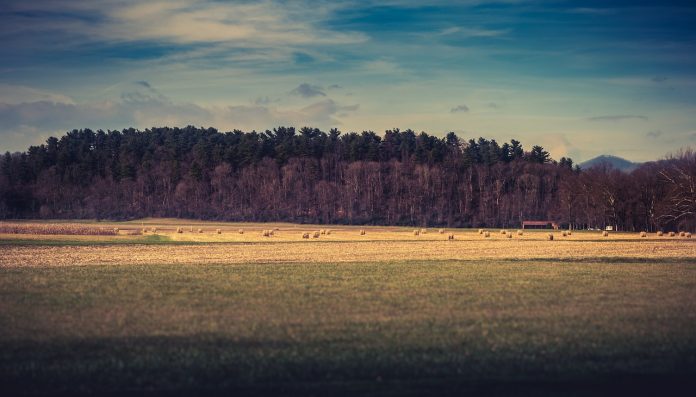NRCS offers easement programs to landowners who want to maintain or enhance their land in a way beneficial to agriculture and/or the environment. All NRCS easement programs are voluntary.

1What is an easement?
A conservation easement is a restriction placed on a piece of land to protect its natural resources. Landowners are compensated for enrolling their land in easements.
A piece of agricultural land put into a conservation program is taken out of production and instead used to promote conservation practices such as wetlands, threatened or endangered species habitats, and more.
2Agricultural conservation
The Agricultural Conservation Easement Program (ACEP) provides financial and technical assistance to help conserve agricultural lands and wetlands and their related benefits.
Under the Agricultural Land Easements component, NRCS helps Indian tribes, state and local governments and non-governmental organizations protect working agricultural lands and limit non-agricultural uses of the land.
Land eligible for agricultural easements includes cropland, rangeland, grassland, pastureland and nonindustrial private forest land.
3Wetland reserve
Under the Wetlands Reserve Easements (WRE) component of the ACEP, NRCS helps to restore, protect and enhance enrolled wetlands.
WREs are either permanent or for 30 years in length. Land eligible for wetland reserve easements includes farmed or converted wetland that can be successfully and cost-effectively restored.
4Healthy forests
The Healthy Forests Reserve Program (HFRP) helps landowners restore, enhance and protect forestland resources on private lands through easements and financial assistance. HFRP provides landowners with 10-year restoration agreements and 30-year or permanent easements for specific conservation actions.
Through HRFP, landowners promote the recovery of endangered or threatened species, improve plant and animal biodiversity and enhance carbon sequestration.
This month we will break down different services provided by the NRCS each week, wrapping the series up with how you can get started with NRCS.
Next week: Getting started with NRCS.
Sources: For more details on each of these programs and to find more programs visit nrcs.usda.gov.
(Farm and Dairy is featuring a series of “101” columns throughout the year to help young and beginning farmers master farm living. From finances to management to machinery repair and animal care, farmers do it all.)
More Farming 101 columns:
- How to fund conservation plans
- What is a conservation plan?
- How can NRCS help you?
- More airborne hazards on the farm
- 5 airborne hazards to beware of on the farm
- 5 things to know about Wagyu beef
- Pennsylvania utility vehicle laws
- Ohio utility vehicle laws
- Farm chemical safety checklist
- When should a farm become a business entity?
- Harvest prep: Check your yield monitors
- How to tag livestock properly
- 6 tips for decision making on a family farm
- 8 tips to prepare your farm for agritourism
- How to plan for farm emergencies
- 7 keys to success on the farm
- 7 tips for healthy fair animals
- 5 tips to ensure livestock health before the fair
- 6 tips to keep your livestock parasite free
- 6 tips for vaccinating your livestock
- 5 tips to prevent dairy cow foot problems
- 6 common foot problems found in dairy cows
- Recognize, prevent heat stress in dairy cattle
- How to monitor your dairy herd
- How to start your own dairy farm
- 5 tips for sun safety in the field
- Employing youth for the summer
- What to do if a hay fire occurs
- How to prevent hay fires
- How to extend the life of your fence
- 10 safety tips for installing electric fences
- How to chose the right fence for your farm
- How to create a fencing plan
- 7 steps for easy sprayer calibration
- Prepare for planting season, Part 2: Calibration
- Prepare for planting season, Part 1: The Basics
- 7 tips to improve security on your farm
- 5 tips to protect your farmland
- 3 measures to deal with severe farm debt
- How to buy time to catch up on farm debt
- 6 tips to manage income on the farm
- 5 tips to recognize and deal with farm stress
- How to prepare a livestock birthing kit
- 5 tips for marketing your farm
- How to develop farm mission, vision statements
- 5 tips for setting farm goals
- 2 types of livestock insurance policies
- 6 things you need to know about WFRP plans
- 3 basics of crop insurance
- How does liability insurance work on the farm?
- Why do I need farm insurance?
- How to understand and use Ohio’s CAUV
- How to utilize the Pa. Clean and Green Act
- 9 tips for filing farm taxes
- 8 reasons record keeping for taxes is essential
- 5 tips for post-harvest storage
- 7 tips for family meetings on the farm
- 4 tips for balancing your farm and family
- 4 tips for communicating on the family farm
- 4 tips for firing an employee
- 6 tips for keeping good farm help
- 4 tips for recruiting farm labor
- 5 general farm labor laws
- 4 tips for employing minors
- 4 tips for PTO safety
- 5 things young farmers should know about finances
- The farm balance sheet
- 5 items for your farm’s cash flow statement
- Personal and business records: Keep them separate
- What to include in your farm business plan
- How to approach a lender: Tips for getting a farm loan
- How to use microloans to get your farm started
- Saving for the future: 6 tips for young farmers
- How to create a farm safety kit
- 5 tips for child safety on the farm
- 4 tips for transporting livestock
- 5 ways to better understand tractor stability
- 6 farm equipment hacks












